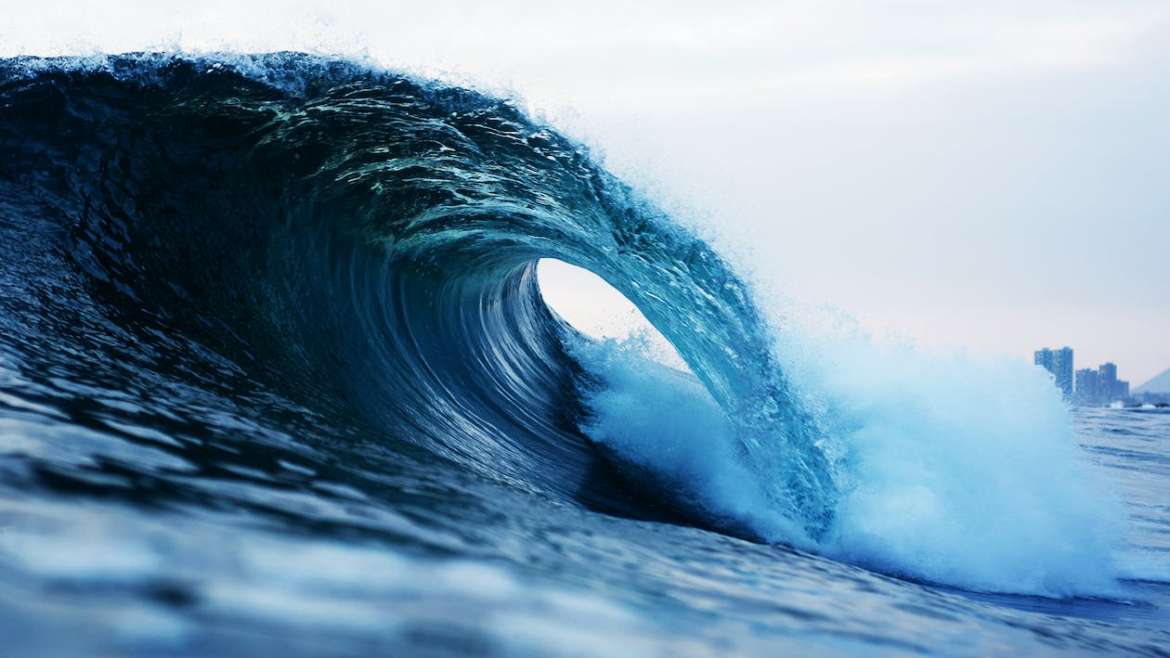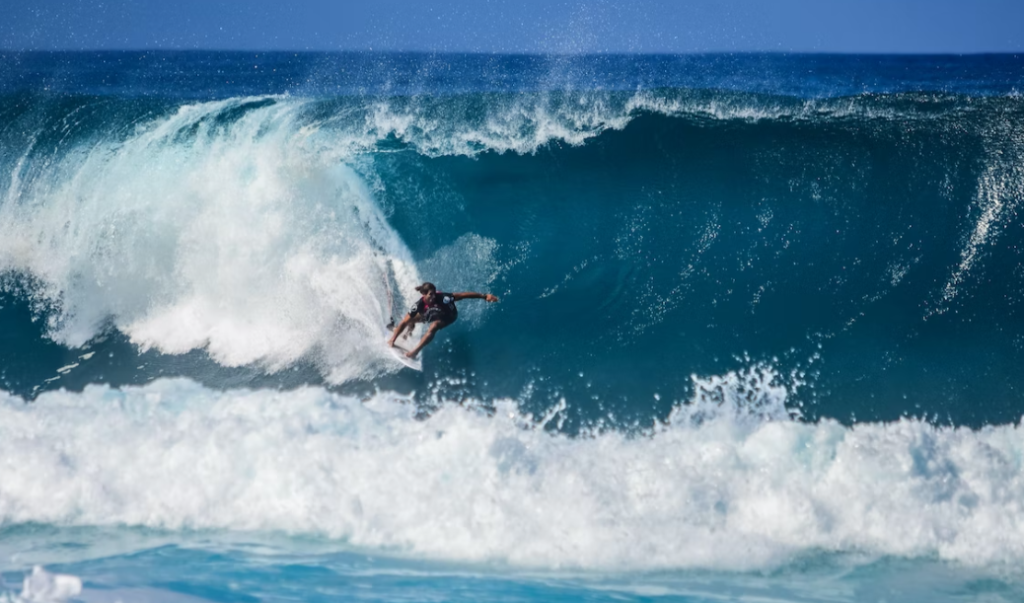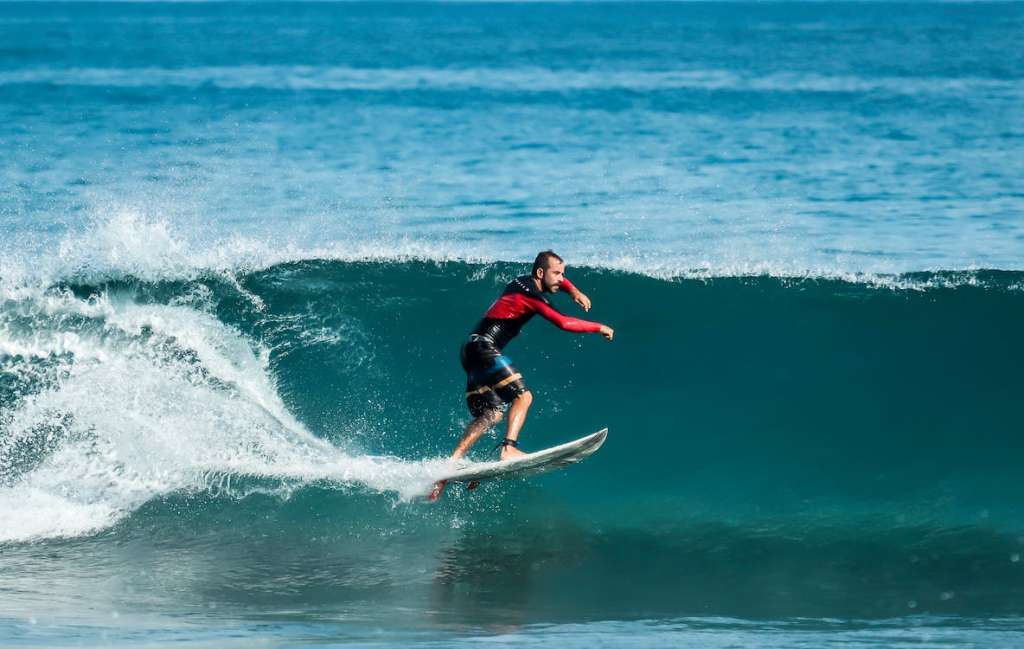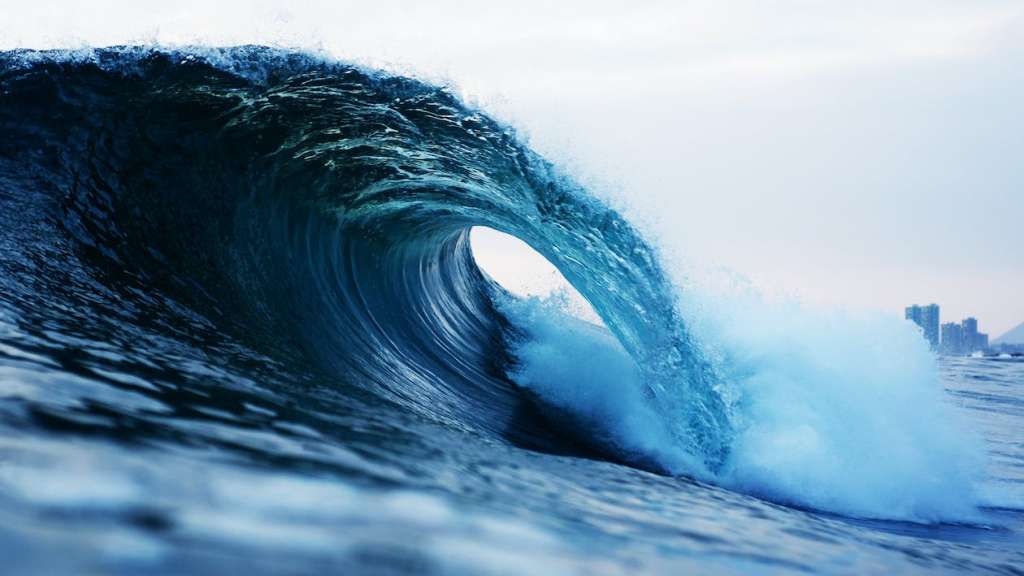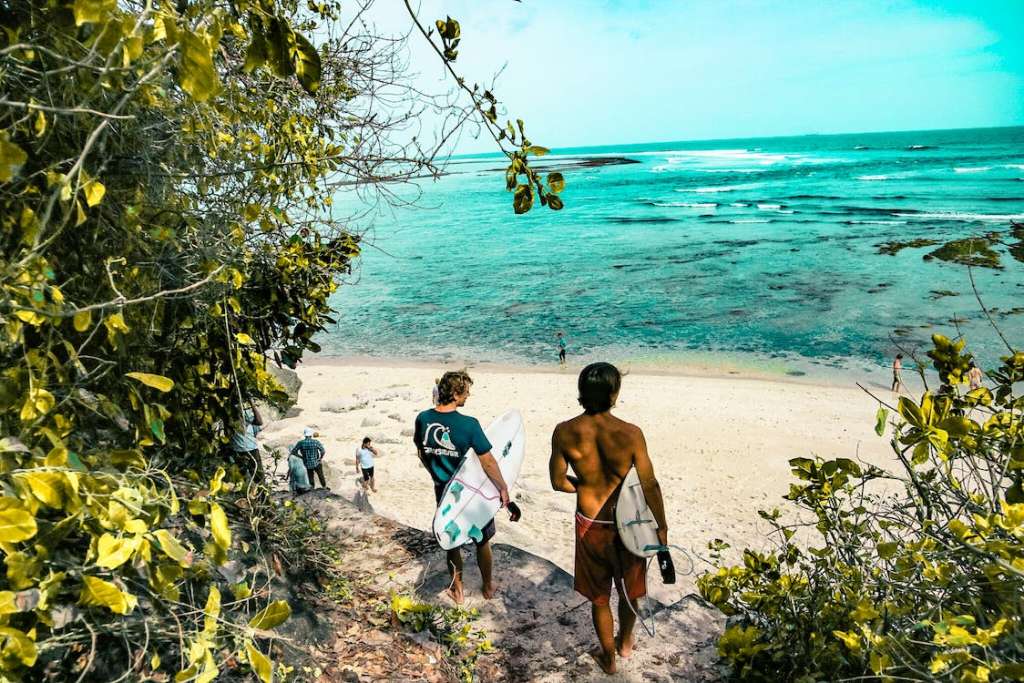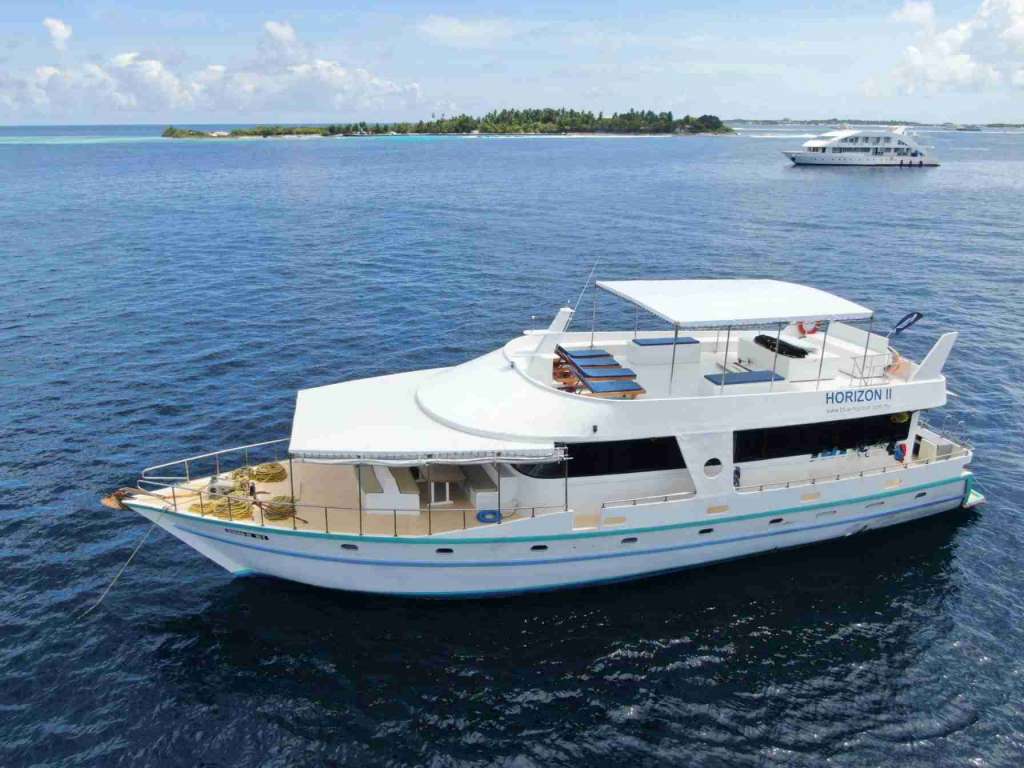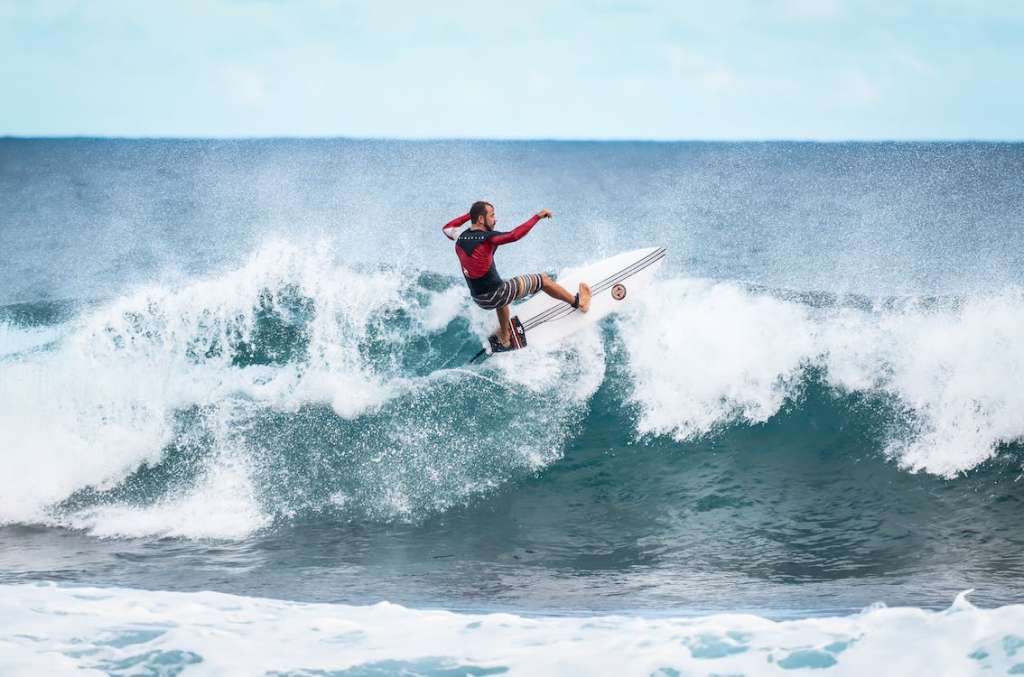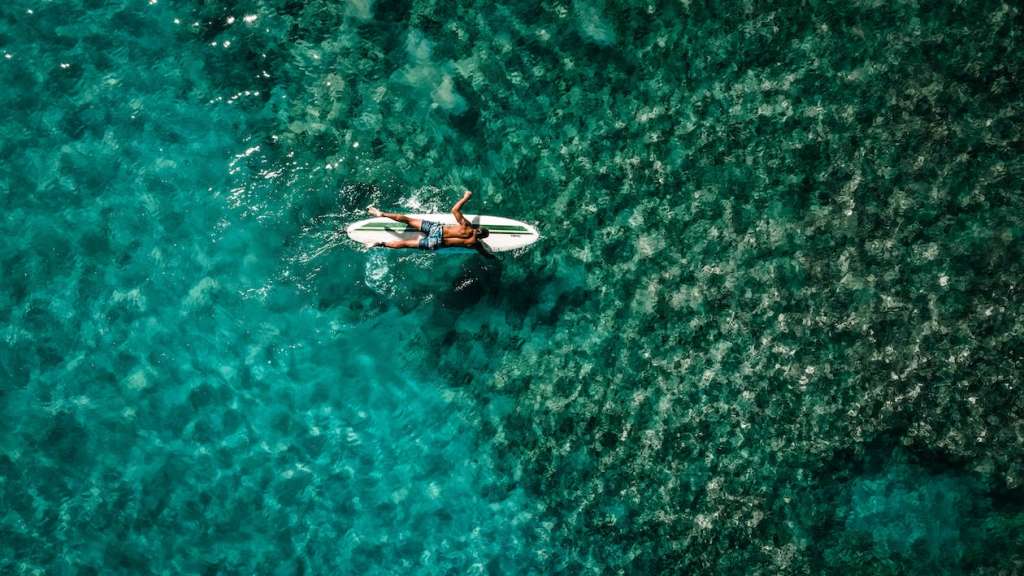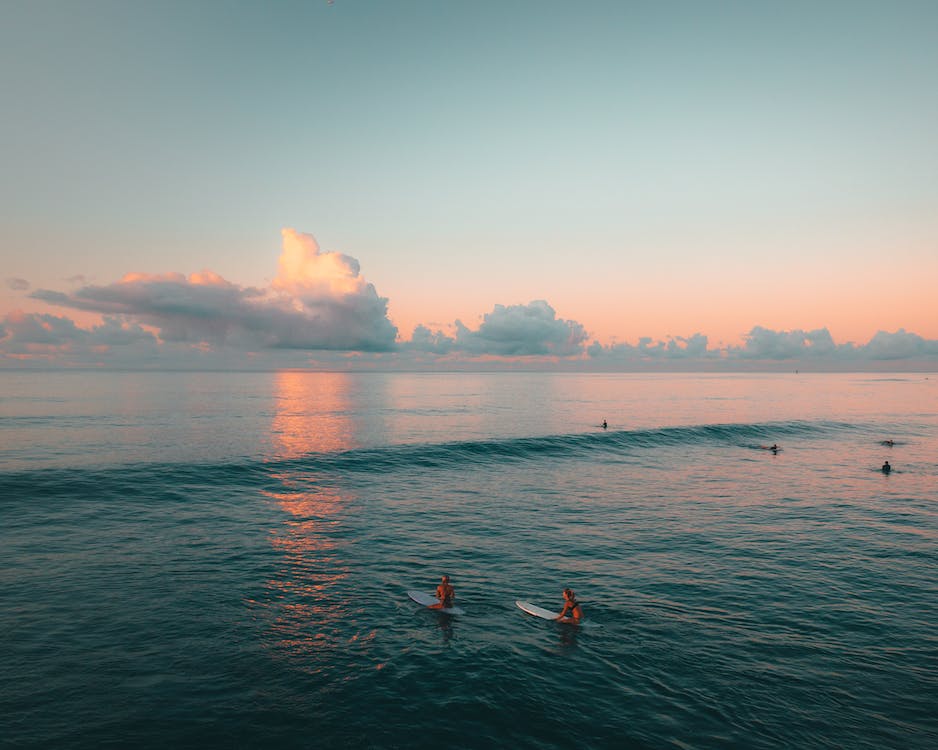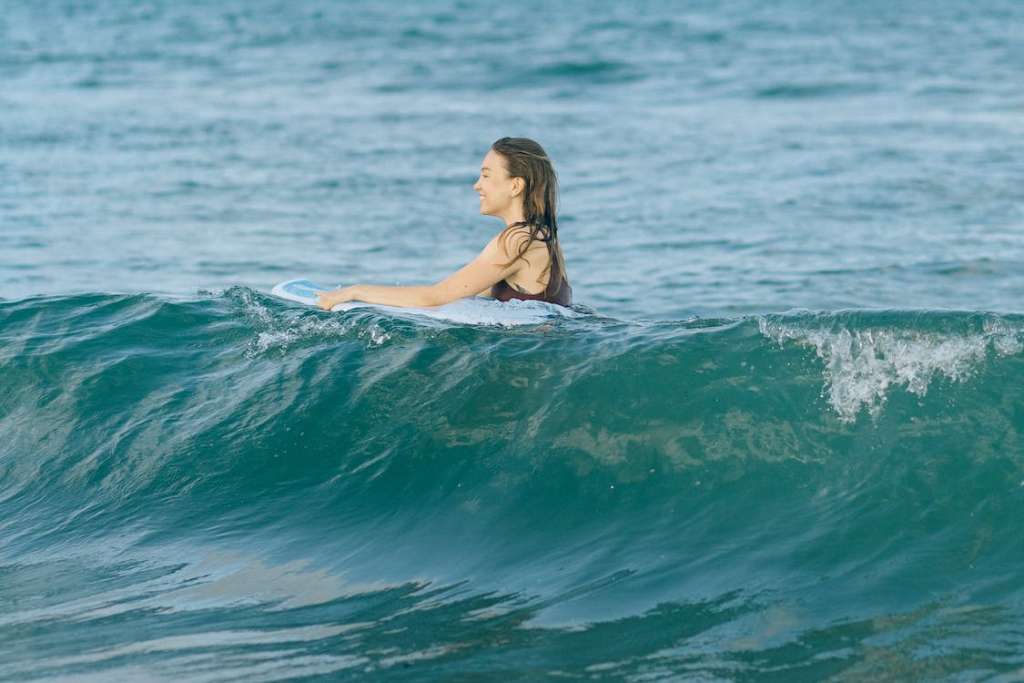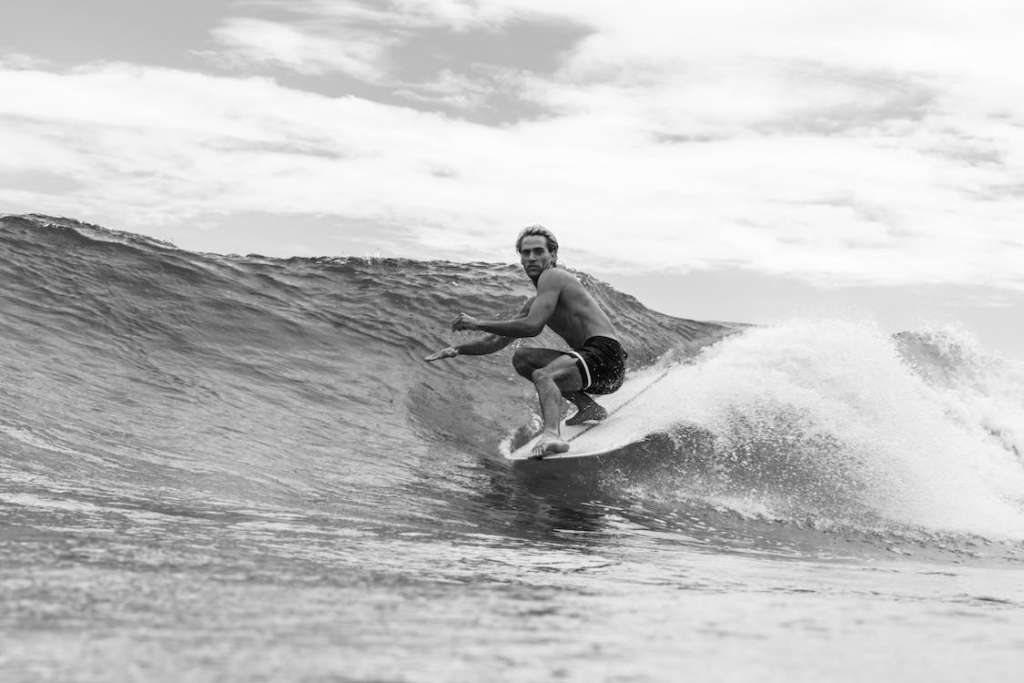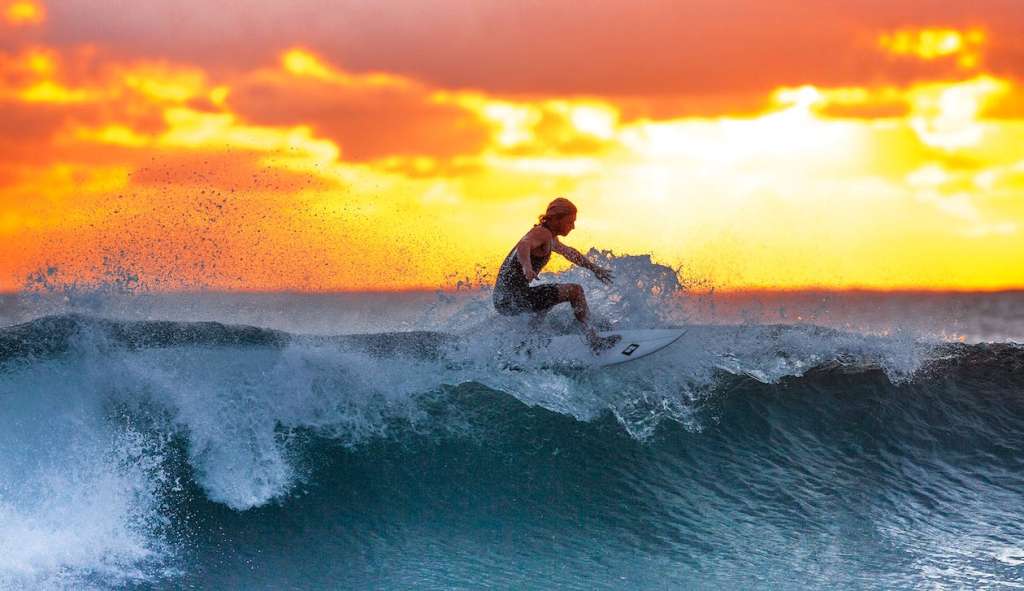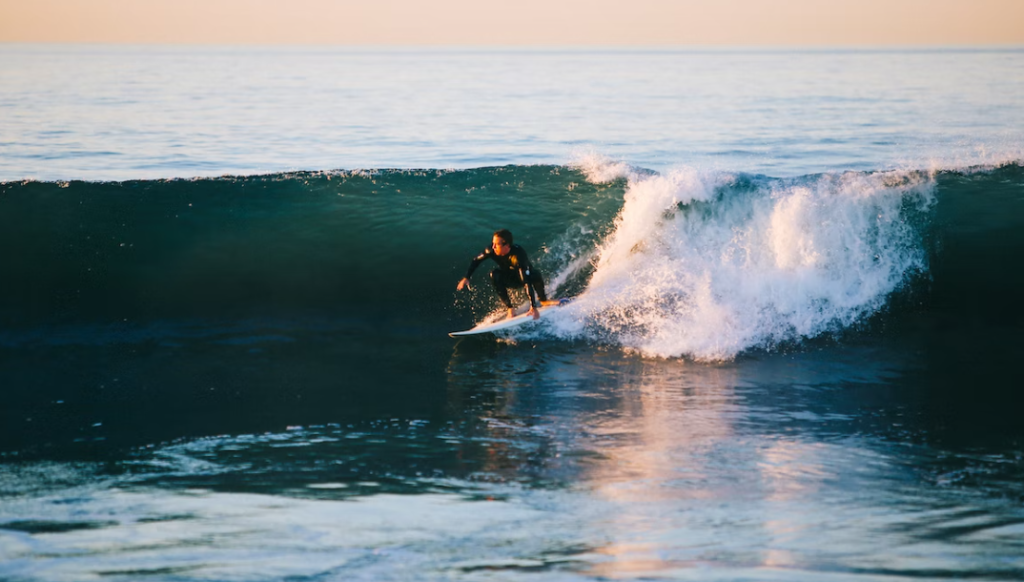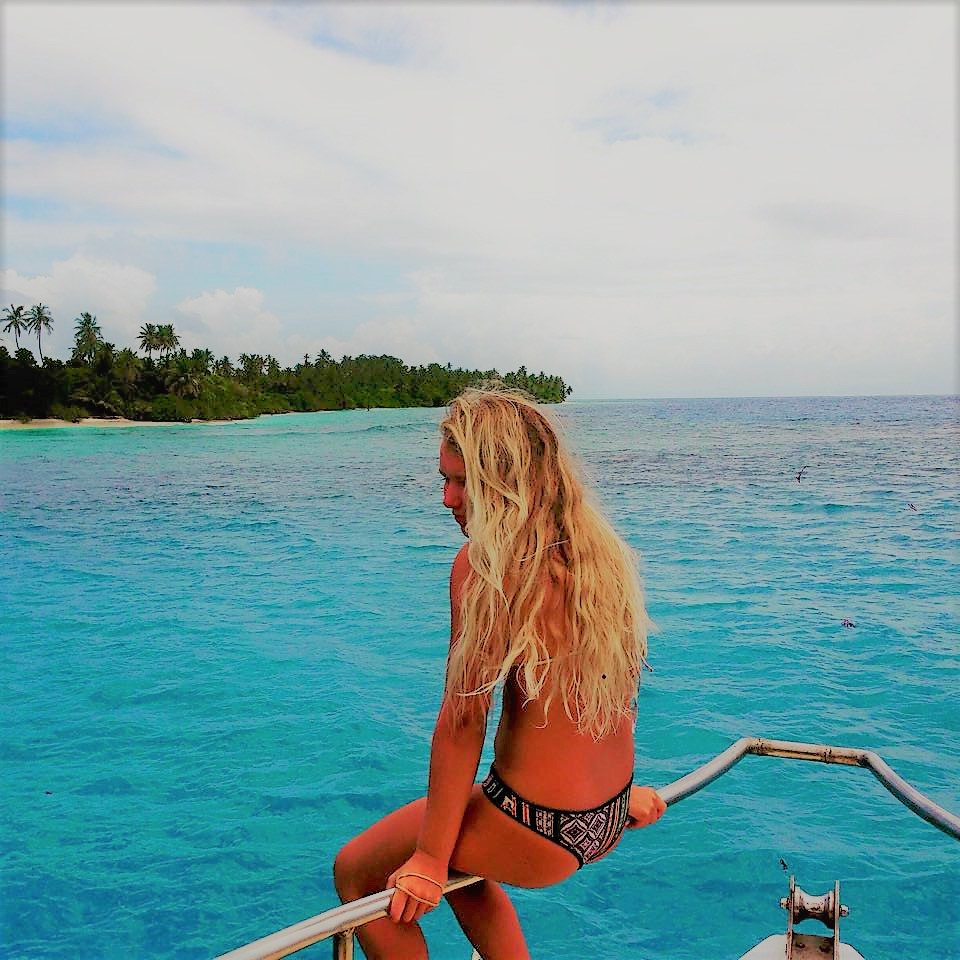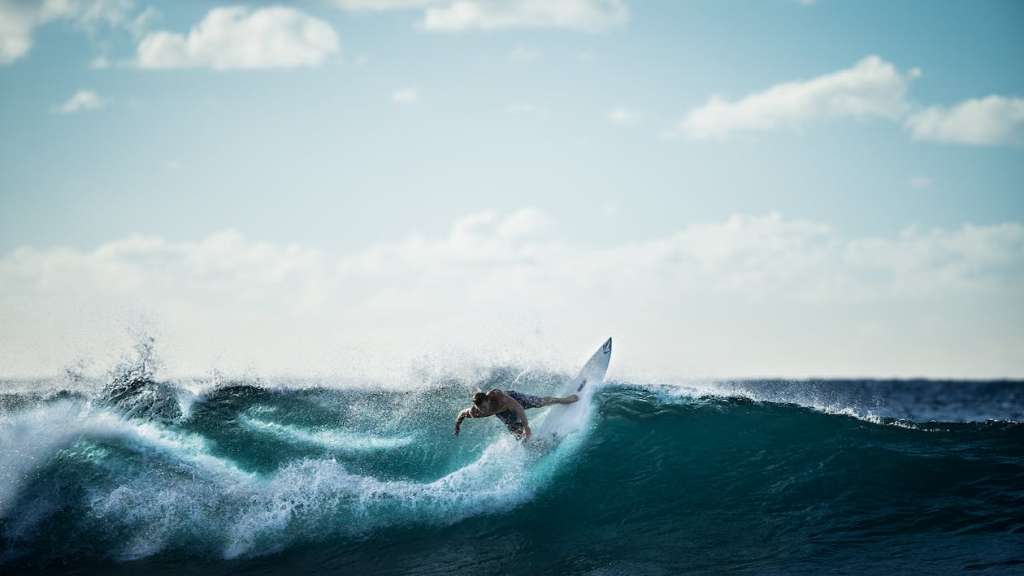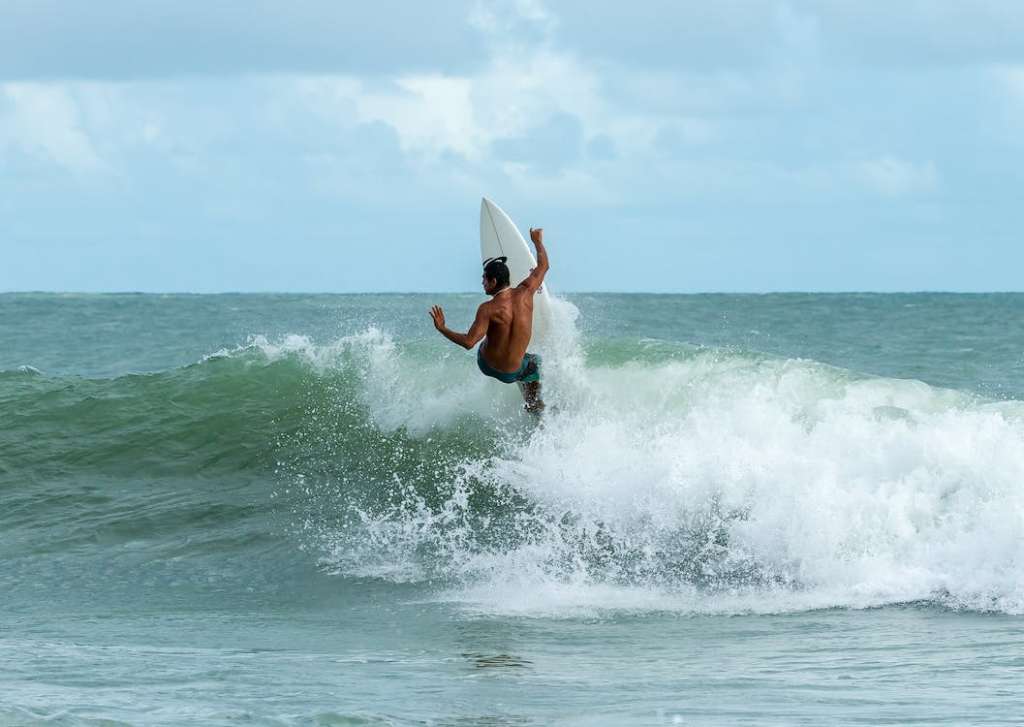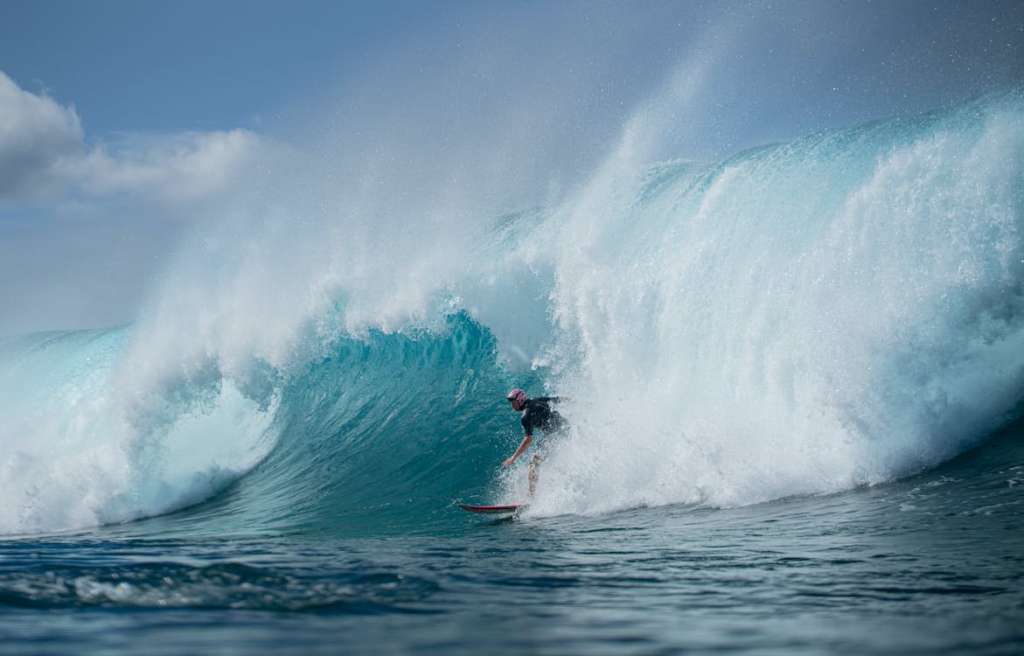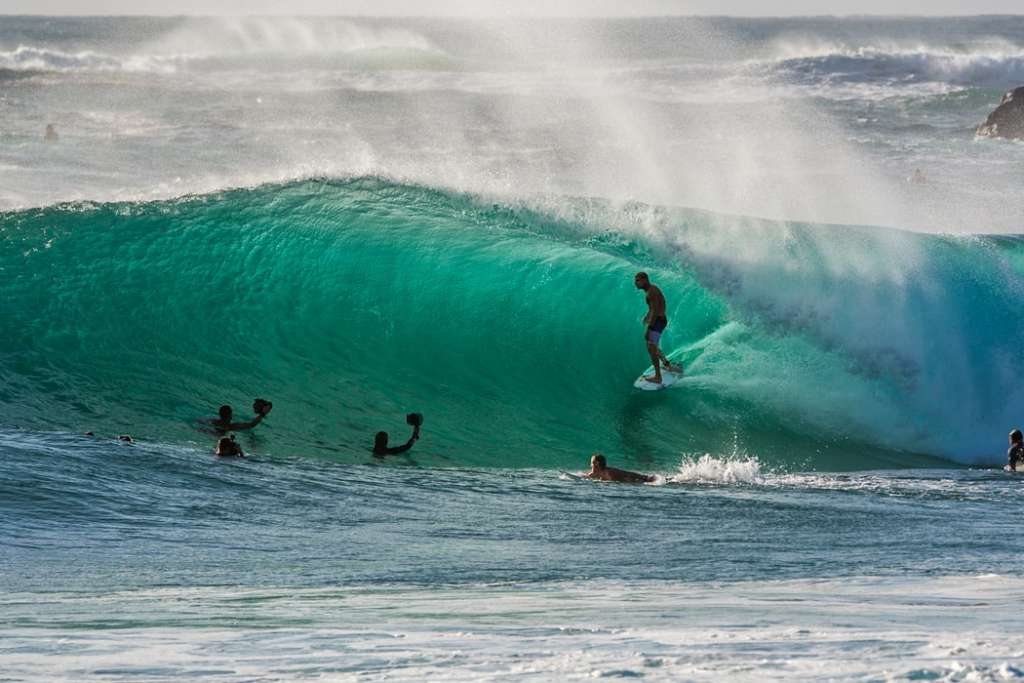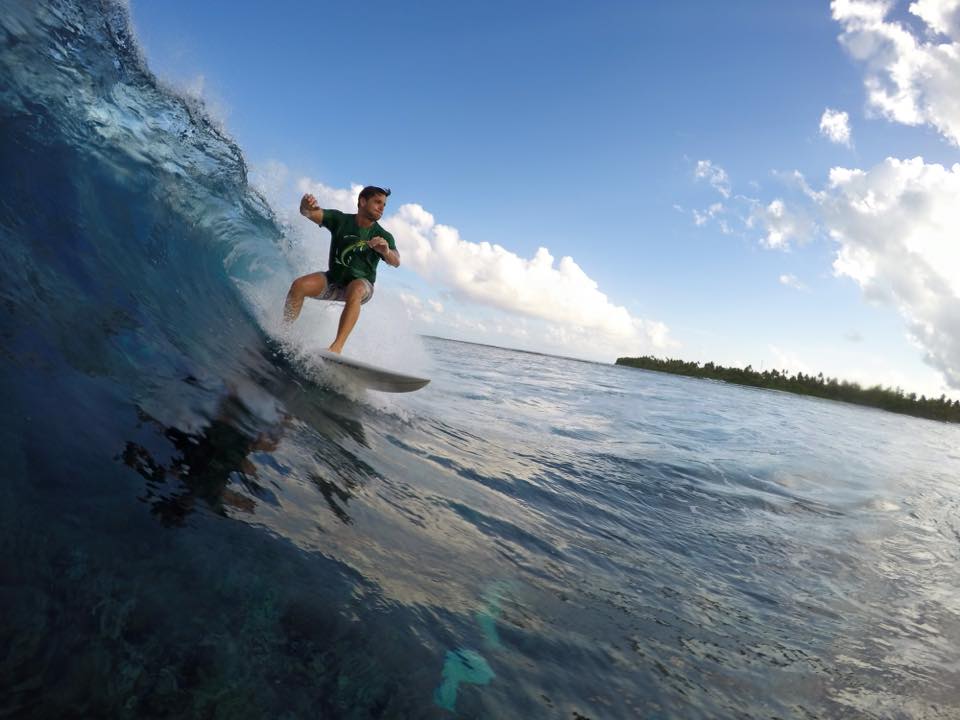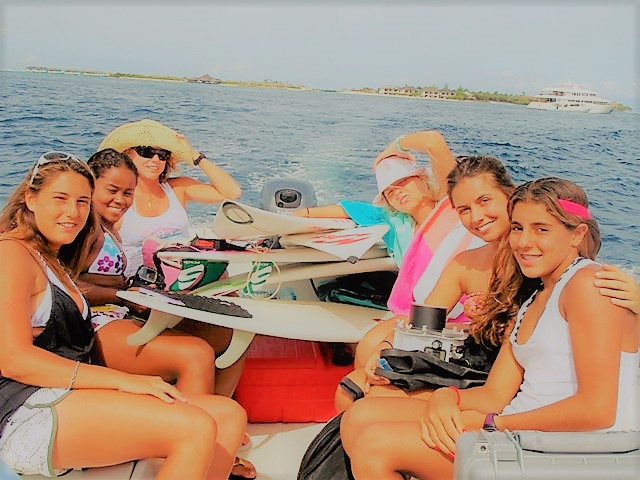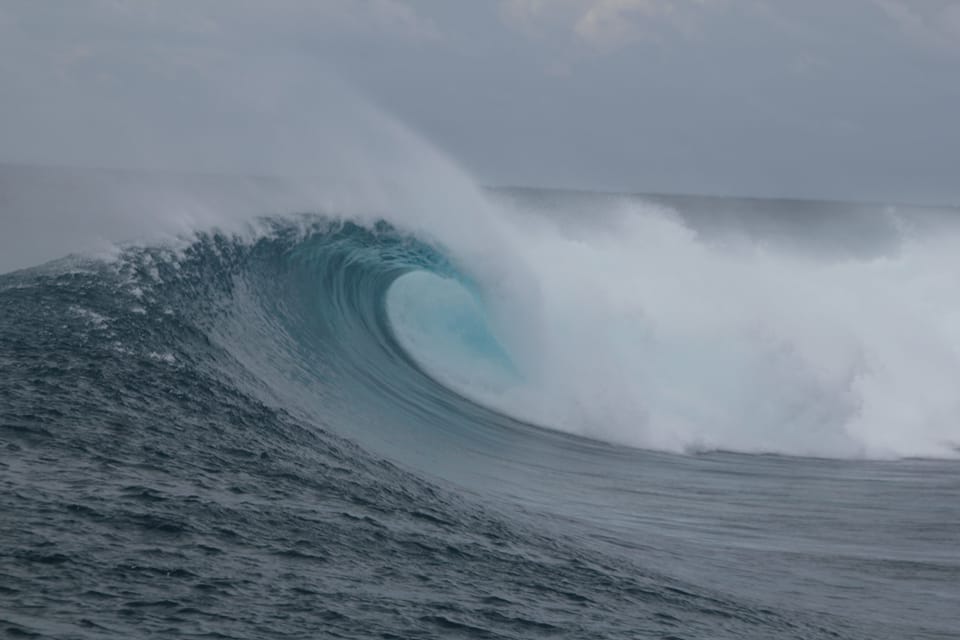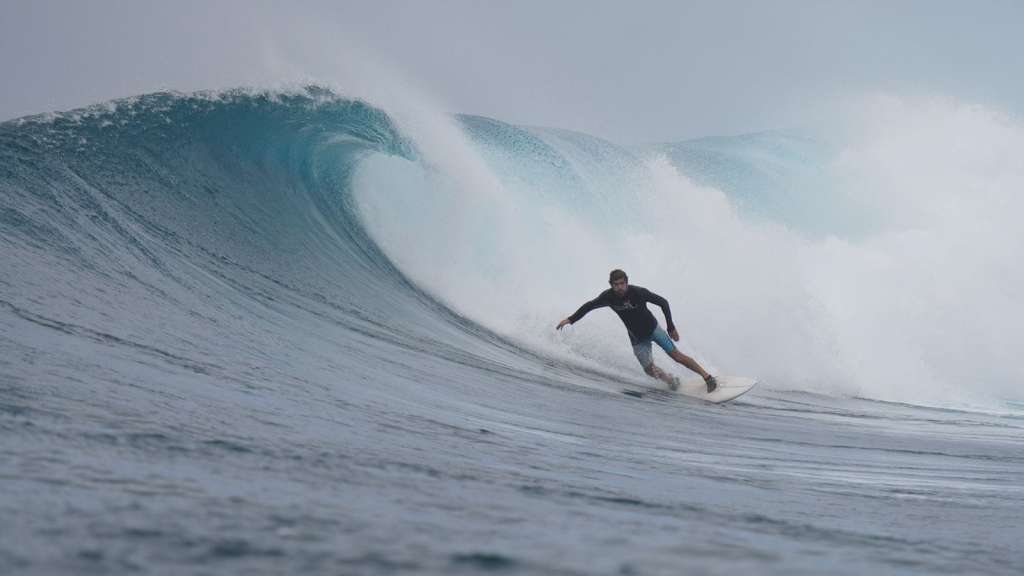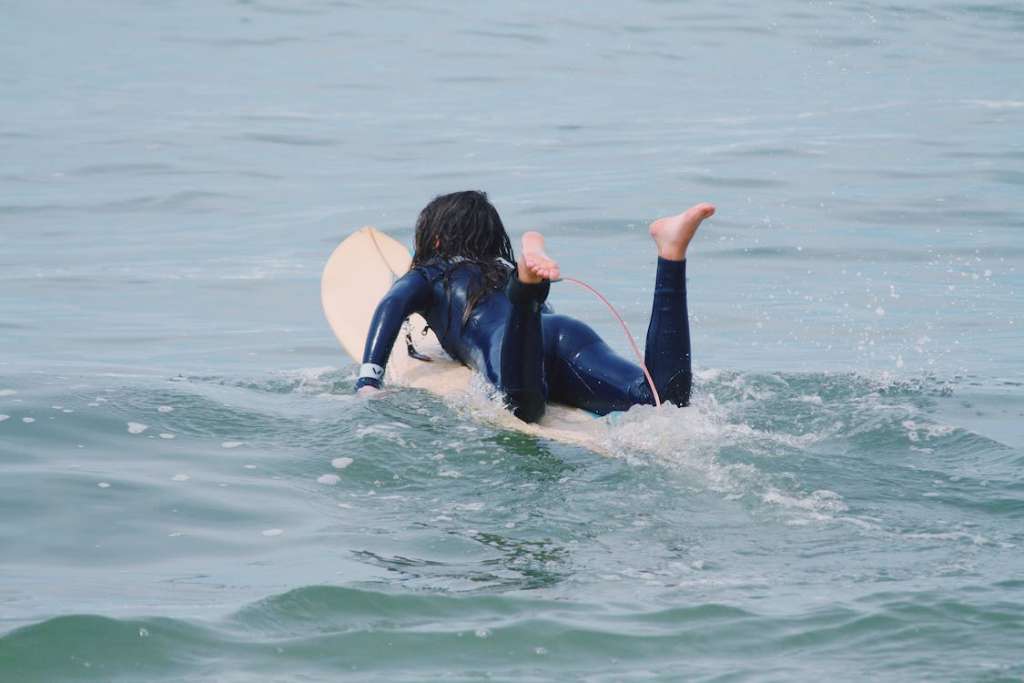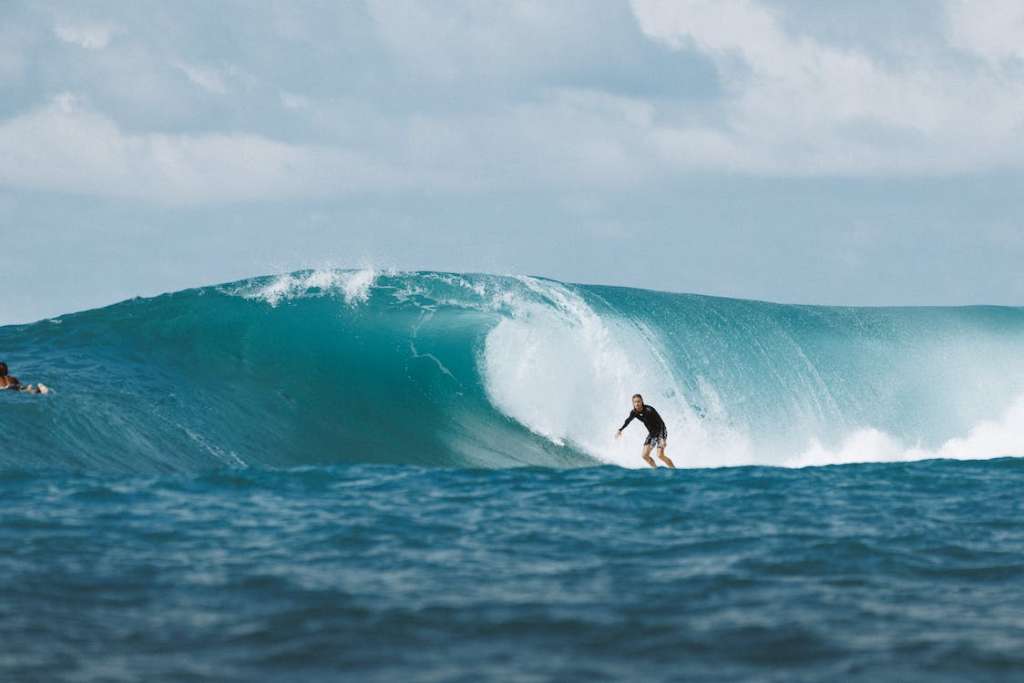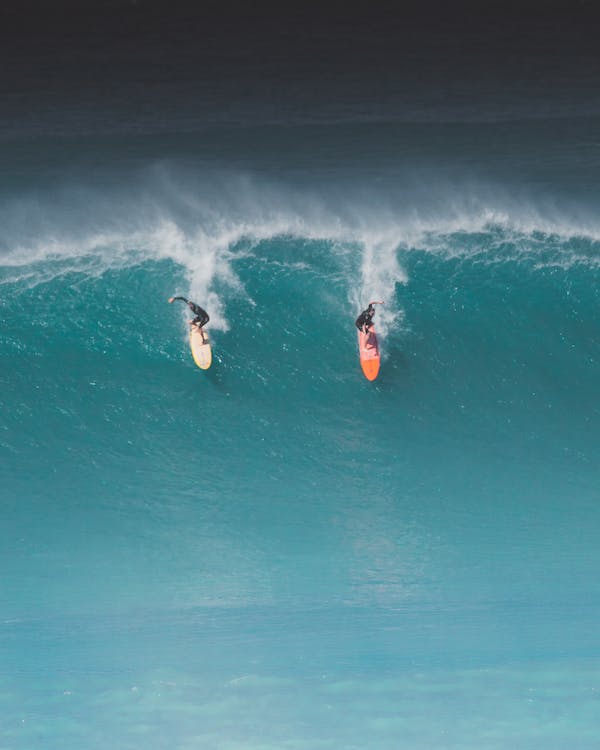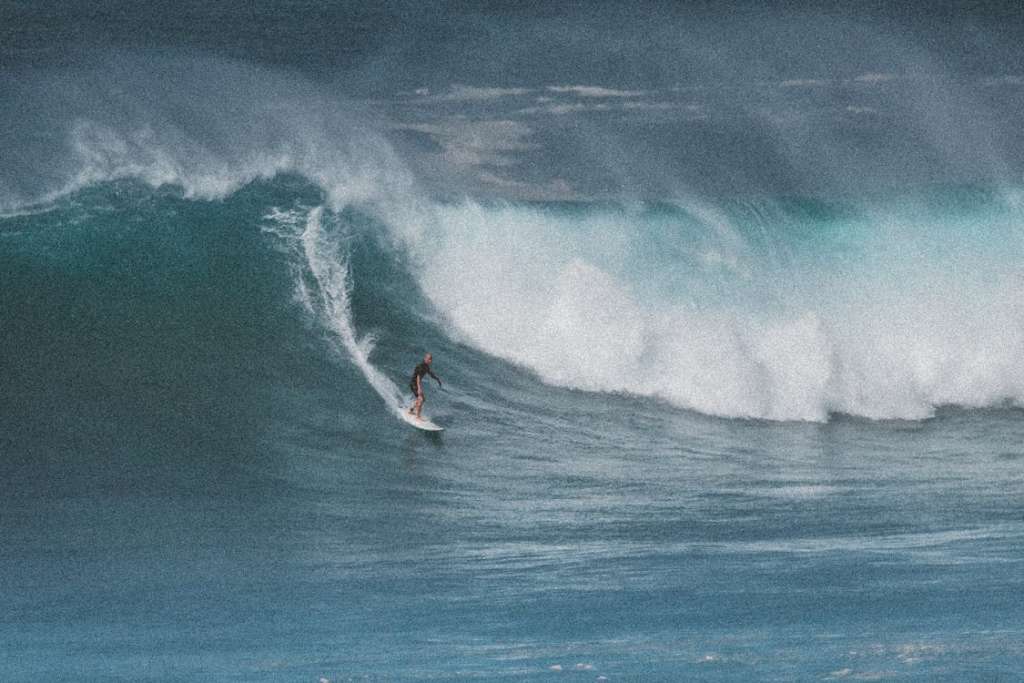Surfing In The Maldives – Introduction
Surfing In The Maldives is a dream of every surfer.
The Maldives, a tropical paradise located in the Indian Ocean, is a popular travel destination known for its stunning beaches, crystal-clear waters, and abundant marine life. But for thrill-seeking surfers, the Maldives offers much more.
With its warm water temperatures, consistent and quality waves, and serene surroundings, the Maldives has become a premier destination for surfers from around the world. In this guide,
we’ll explore what makes the Maldives a great surf destination and provide tips on when to visit, what equipment to bring, and how to stay safe while surfing.
Whether you’re a seasoned pro or just starting out, the Maldives is a must-visit surf destination that promises unforgettable waves and memories.
Surfing In The Maldives – What Makes the Maldives a Great Surfing Destination ?
The Maldives is renowned for its warm and clear waters, which attract surfers from all over the world. With water temperatures that average around 28-30°C (82-86°F), you can enjoy long surf sessions without getting too cold.
The Maldives is also known for its consistent and quality waves, which make it a top destination for surfers of all levels.
From gentle, rolling waves to fast-breaking barrels, there’s something for everyone in the Maldives.
This is due in part to the way the waves are formed by the surrounding reefs, which create perfect conditions for surfing.
In addition to its waves and warm water temperatures, the Maldives is a breathtakingly beautiful place to surf.
Surrounded by lush green vegetation, the crystal-clear waters and vibrant coral reefs create a serene and peaceful atmosphere that makes surfing here an unforgettable experience.
Whether you’re looking for a quiet escape from the hustle and bustle of everyday life or simply want to experience the beauty of the Maldives, this is the perfect place for you.
Best Time to Surf in the Maldives
The best time to surf in the Maldives depends on the type of waves you’re looking for and your skill level. The surf season in the Maldives typically runs from April to October, with the best conditions found during the monsoon season from May to September.
During these months, the waves are usually bigger and more consistent, making them ideal for experienced surfers.
For beginner and intermediate surfers, the best time to visit is from November to March.
During these months, the waves are smaller and gentler, making them easier to handle for those who are just starting out or still building their confidence in the water.
It’s important to note that surf conditions in the Maldives can vary greatly from one day to the next,
so it’s always a good idea to check local weather and surf reports before heading out.
Additionally, keep in mind that the best time to surf will also depend on your personal preferences and the type of experience you’re looking for.
Whether you’re seeking big, challenging waves or smaller, more manageable conditions, the Maldives has something for everyone.
Types of Waves in the Maldives
The Maldives is known for its consistent and quality waves, which are formed by the surrounding reefs.
This makes it a great surf destination for surfers of all levels, from beginners to experienced pros.
Here are some of the most common types of waves you’ll find in the Maldives:
- Left and Right-Hand Point Breaks: The Maldives has several left and right-hand point breaks that are ideal for experienced surfers. These waves break over a shallow reef and offer fast, powerful rides that can last for several hundred meters.
- Reef Breaks: Reef breaks are the most common type of wave in the Maldives and are great for surfers of all levels. They form over shallow reefs and offer a variety of wave shapes and sizes, from gentle rolling waves to fast-breaking barrels.
- Beach Breaks: There are also a few beach breaks in the Maldives that are great for beginner and intermediate surfers. These waves break over sandbars and offer a gentler, more manageable surf experience.
Regardless of your skill level or the type of waves you’re looking for, the Maldives has something to offer.
With its warm water temperatures, consistent and quality waves, and breathtaking scenery, the Maldives is a must-visit destination for surfers from around the world.
Maldives Surf – North Male’ Atoll Breaks
North Male’ Atoll is the most accessible, best-known, and most popular surf breaks in the Maldives.
There are some Surf Resorts in the region like Cinnamon Dhonveli, which gives exclusive access to Pasta Point, and is very handy to Sultans, Honkys and Jailbreak, as well as all other breaks.
A good alternative is a boat-based Inner Atoll Surf Charter boat trip. We at Blue Horizon offer a Surf Liveaboard Trips in the Maldives.
The Maldives surf breaks in North Male Atoll are:
Chickens:
This long, fast left was one of the first Maldives surf breaks discovered by Tony Hinde in the 1970s.
At its very best on rising to high tide with a swell over 2m and a light northerly wind, the wave goes up to 500m from a fast walling first section into long barreling second section – a world class wave for skilled surfers, but great for intermediates in smaller swells.
Cokes:
This steep, hollow right hander breaks over a shallow reef, and is strictly for advanced surfers when the swell is up. With a big swell and southwest wind, it makes it one of the best barrels in the Maldives.
Lohis:
Two-sectioned left off Lohifushi island – the access is restricted only to guests of Huduranfushi Resort, but it can still get very crowded.
The sections link up best on a big swell at high tides – with a northerly wind it can be a really long tubing wave.
Ninjas:
It’s accessible to anyone on a boat, this mellow right is a good long-board wave and ideal for beginners. It’s best with a northwest wind (or no wind) on a moderate swell – it closes out over 1.5m.
Pasta Point:
Breaking over the house reef of the Cinnamon Dhonveli, and limited to only avg 30 guests, this wave is never crowded. It’s a perfect, long, peeling left and probably the most consistent Maldives surf break.
Works in winds from southeast, northeast, north and northwest. Small swells are ideal for intermediate surfers.
Sultans:
At the northeastern corner of Thamburudhoo island, this excellent right can handle any size swell.
Best at high tide with wind from the south to the west. Even on a small swell it’s a fun, fast wall; over a metre, there’s a great peak takeoff that turns into a thick tube on the inside.
The end section reaches barreling perfection over 2m.
Honkys:
Honkys is a mirror to Sultans – a long wrapping left that’s best at low tides and in north to northeast winds, ie when it’s blowing onshore at Sultans.
Perfect 150 yard ride with long walls and an inside section that stands up bigger than the takeoff. Best wave in the Maldives on its day.
Jailbreak:
It’s a long, fast right, best in a southwest wind, on a mid to rising tide. On a small swell it works as three sections, but up around 2m the three tube sections connect with long, super fast, walls.
Maldives Surf – South Male’ Atoll Breaks
South Male’ Atoll waves are usually a couple of feet smaller than those in North Male’ Atoll, but they can be excellent if there’s a big swell.
The season for reliable waves a bit shorter, with April to September being the best months.
There are a few resorts here, but none are really set up for surfing. The best option for surfers is a boat-based Inner & Central Atolls Surf Charter trip.
The main Maldives surf breaks in South Male Atoll are:
Gurus:
Across the channel from the tiny island of Gulhi, this left-hand reef break picks up the most southerly swells, and works well with a north wind.
If it’s 1.5m or more, it has a long, fast, workable wall. A fun wave for intermediate surfers.
Twin Peaks:
At the eastern tip of Gulhi, the reef point breaks left and right, like Sultans-Honkys in North Male Atoll.
The left is best on high tides; the right is more reliable. and popular with local surfers
Quarters: (Workers) at the south edge of the channel, this small, quick right needs a bigger swell to work. Punchy barrel in the right conditions.
Kates:
A Small and short left-hander that works very well with NW to N winds and rarely gets over 1 meter.
Natives: (Foxys)
it’s a Hollow right breaking in shallow water over the reef, this is not for beginners. With a north-west wind and a solid swell it forms long, fast barreling waves.
Kandooma Right:
Off the Holiday Inn Resort island, exclusive to its guests, this right hander breaks off the eastern edge of the reef with a relatively easy outside take-off.
Works best on a bigger swell with a west to northwest wind, when the wave wraps around the reef corner jacking into a fast barrelling wall.
Riptides: fast right in the middle of a channel – beware of strong currents when the tide is running. A right-hander breaking for 150 meters on a reef in the middle of a channel. Only accessed by boat.
Maldives Surf – Central Atoll Breaks
The “Central Atolls” refers to the four atolls between Male’ and Southern atoll area.
They are as follows.
- Meemu
- Dhaalu
- Thaa
- Laamu.
The best way to surf the Central Atolls is on a charter boat which gives best access to the breaks of the different atolls depending on the prevailing swell and wind directions.
Flying down on an inter-atoll domestic flight to Laamu Atoll to meet your charter boat is the most time efficient trip itinerary avoiding a couple days of boat travel from Male.
A well organized boat trip with very experienced guide will make the most of the conditions when you’re there, and get you onto a variety of the best waves in the region.
An advantage of the Central Atolls is the accessibility to breaks that are exposed to the wider range of swell directions from south-west to south-east swells.
The best waves are on reefs beside a “kandu” or channel where water flows in and out of the atoll lagoon.
The swell direction, tide and wind direction determine the best spot on the day. Most of the best breaks in the Central Atolls are right handers but there are plenty of good lefts as well.
Meemu Atoll
There’s one main reef pass on Meemu, with several breaks within a short distance.
Veyvah (Playgrounds) – On the north side of the channel off Vevah island, this fun lefthander is good for intermediate surfers. Easy take off goes into a long wall that can tube nicely in the right conditions.
Mulah (Mulah Left; Pit Stops)
On the other side of the Mulah point, a challenging left hand tube works on bigger swells, higher tides and north wind. In the right conditions it breaks long and fast over a shallow reef.
Mulah Point (Mulhaku)
South of the channel, at the tip of Mulah island, is another fun wave – a nice right hander for intermediates on a small day, but can handle a much bigger swell. Local kids learn to surf here.
Muli Outside (Mushrooms)
East side of Muli island, so it picks up more swell – a long, tubing right hand point break with an easy exit. Consistent.
Muli Inside
Off the northern tip of Muli island, this fast right needs a bit of swell and a southwest wind to be at its barreling best. Long, hollow, shallow at some points but finishes in deeper water.
Dhaalu Atoll
Best suited to a south-west swell direction Dhaalu has three good breaks on its southern edge.
Hocus Pocus (Maaemboodhoo)
Off the eastern tip of Maaemboodhoo island is a short, hollow right hand barrel that works in west/southwest winds and a south-west swell. Best surfed at mid to high tides because it breaks over a shallow reef – advanced surfers only.
Vodi
Nice left hander that breaks on to the Niyama Resort hotel island mainly surfed by the resort’s guests. Good on a northeast wind and a southwest swell, but can be shallow and shifty.
Beginners and longboarders enjoy it on a high tide and a small swell. On a big swell it hollows out to a fast, clean, walling wave.
Kasabu (Kudas; Mauroofs)
Right by the airport runway on Kudahuvadhoo island, this quality right hand wave is best with a southwest swell and a northwest wind. It starts working at 1m swells, when beginners get an easy take-off on the end section..
Thaa Atoll
Thaa has a few breaks on its western and southern edges. Going anti-clockwise, they are:
Bowling Alley (Vandhoo) – Like your local bowling alley, “Bowling Alley” is the break on the west coast of Thaa Atoll where you can have very good times.
Works on any tide with a small to medium southwest swell, but it’s best with northeast to southeast winds which are not prevalent.
Malik’s (Hirilandhoo)
On the outer edge of the same reef channel, this wave also works best on a southeast wind and a southwest swell. On a good day, it throws up long, fast left-hand barrels from 1 to 3 metres.
Adonis (Veymandoo)
Moving to the southern edge of the atoll, beside the channel at the tip of Veymandhoo island, Adonis is a long, fast, hollow, right-hand barrel in the right conditions – a solid swell and a northerly wind. Some sections can get shallow.
Outside Mikados
Further east, a smaller reef pass catches the southerly swells, and rolls out some high powered barrels. Outside Mikados gets the most of it, and forms a fast, sectiony right that gets bigger and faster as it goes, closing out over jagged reef. Better (and slightly safer) on higher tides and bigger swells (1-2 metres) with a light or northerly wind. Exciting ride for gutsy surfers who can gun it down the line.
Inside Mikados (Inside Farms)
Just inside the channel, a more mellow right wraps around the reef producing a picture-perfect, peeling right-hander. Absolutely ideal at mid- to high tide with a medium size southwest swell and a southwest wind.
Finnimas
On the other side of the channel is a fast, shallow left hander. It’s a bit fickle, but with a southwest swell and a northeast wind (or no wind at all) it will get you nicely barrelled. Very occasionally, with a solid swell and a west or southwest wind, a peaky right hander forms across the channel.
Laamu Atoll
If you’re doing a Central Atoll boat charter, you’ll probably arrive on a domestic flight from Male, landing on the island of Kadhdhoo, on the southeast side of Laamu Atoll.
Good surf breaks are on the southern and north-eastern edges of Laamu.
Yin Yang (Ying Yang)
Yin Yang is the most consistent wave in Laamu, working best under strong SE swell when thick barrels and a powerful inside section can be punishing.
A long, fast right-hander, it starts with a solid barrelling outside section, forms nice walls and bowls as it wraps around the corner, then the inside section gains power and speed all along the reef ledge.
It’s like two waves, with the outside best in northwest winds and the inside better with a south-westerly.
Pretty consistent, it will work on any tide, in any swell that’s generally from the south. At its very best with very light winds and a southeast swell over 3 metres.
Madas (Petrols)
At the inside edge of the same channel, this short left is a good alternative to Yin Yans when there’s a bigger southwest swell and a northwest wind. A bit shallow at low tide.
Bedhuge (Mundoo)
Heading up the east side of the atoll, on the tip of Mundoo island, this classic, wrapping, righthander needs a bigger southeast swell and a west wind. It’s a small wave that breaks best at lower tides over shallow coral – for advanced surfers.
Refugees Lefts (Machine Lefts)
Across the channel from Bedhuge is a series of short, left-hand peaks. With a solid southeast swell and a southwest wind, the sections link up to give a succession of fast and furious drops and a rollercoaster ride. A shallow take-off, heavy waves and strong currents mean it’s not for beginners.
Refugees Rights (Machine Rights) – Just to the north is a right hander for surfers who like it fast and furious. It needs a sizeable southwest swell to work, with a sharp take-off over a shallow reef section, shooting into a fast-breaking barrel that doesn’t let you off till the end.
Machine (Maahbaidhoo; Tsunamis) – At the northern tip of Mahibadhoo island, this right-hander starts on the outer reef and wraps around into the channel.
It’s rideable with a smaller swell and on any tide, but at its best with a bigger southwest swell, incoming tide and southwest wind. In these conditions, it’s a super long, winding barrel, starting outside on a fast, straight reef section, then into a mellow, fun corner, finishing with a final, heavy barrel section.
Isdhoo (Langdon Bank)
At the very north-eastern tip of Laamu Atoll, Isdhoo is a nice right that works well on a big south to south-easterly swell. It’s a bit out-of-the-way, and there’s no suitable anchorage for boats, so it’s not surfed much, just the occasional surf charter boat heading to or from Thaa Atoll.
Maldives Surf – Outer Atolls Breaks (Best Rated Surf Breaks)
Now well established on the Maldives surf scene, the southern South Huvadhoo Atoll (also called Gaaf Dhaal) has over a dozen named breaks on the reef channels round its southeast coast.
The main surf breaks on the southern coast, going clockwise from east to west are:
Tigers: (Tiger Stripes)
This long, wrapping left breaks over a coral reef with parallel grooves like the stripes of a tiger. With a solid swell the tricky take-off leads into a long wall that wraps around and gets faster and steeper into a final barrel section.
Antiques:
Across the channel from Tigers, its right handed twin is a smaller wave, easier to handle – better for beginners, especially when the swell is bigger.
Love Charms:
Very reliable left-hander works on any swell, but changes as the swell gets bigger. At low tides with a small swell, it has two sections starting with a hollow wall then some nice little pockets. When it’s bigger, the sections join up in a long, solid wall with a series of barrels.
Two Ways:
A more relaxed wave that goes both left and right off the southern tip of the reef. It works at all tides, breaking into deeper water than many of the shallow reefs around, so it’s good for intermediate surfers and a fun wave for everyone. The right needs a slightly bigger swell, but they both work at any swell over a metre with long, peeling walls.
Five Islands:
On the southeastern corner of the same reef pass, this long and solid right-hander needs a south swell and a mid- to high tide (can be dangerously shallow at low tide).
Needs a swell of well over a metre and handles twice that and more. When the section link up, it’s a long, hollow, barrelling and very fast wave for advanced surfers.
Bluebowls: (Voodoos)
This wave is surfable all the time, all swells, all tides, and all sizes. It is a good length for an easy ride and nice sections for some moves.
At the eastern tip of Vaadhoo island, the reef point forms a long, wrapping right hand wave.
Good at all tides, and protected from onshore winds, it works on small and large swells but is ideal around 1.5 to 2m with a westerly wind, when it has a whole series of bowl sections linked by smooth walls. Fun wave for shredders and longboarders alike.
Castaways:
Breaking over the eastern tip of an isolated reef, this right hander is definitely for high tides.
The take off is easy, but gets steep fast, and shoots into the speedy end section over shallow reef. A great wave when the swell gets to 2m or more.
Beacons:
On the western edge of the Fiyoari channel, Beacons is one of the most powerful Maldives surf breaks.
A fierce and fickle right, it’s strictly for skilled and serious surfers. Needs a clean southwestern swell to make it peel along the edge of a shallow reef, forming an epic tube. Southeast or even southern swells will close out unpredictably onto the coral.
Essential Equipment for Surfing in the Maldives
When it comes to surfing in the Maldives, having the right equipment is essential to ensure a safe and enjoyable experience.
Here’s a list of essential equipment you should bring with you:
- Surfboard: The most important piece of equipment for surfing is, of course, a surfboard. Choose a board that is appropriate for your skill level and the type of waves you’ll be surfing.
- Wetsuit: A wetsuit is important to protect you from the sun and to keep you warm in the water. Wetsuits are especially important during the monsoon season when the water can be quite cool.
- Leash: A leash is used to attach your surfboard to your ankle, preventing you from losing your board in the water.
- Surf Wax: Surf wax is used to increase the grip on your surfboard, helping you to stay on your board more easily.
- Sunscreen: Protecting your skin from the sun is important when surfing in the Maldives, especially since you’ll be spending a lot of time in the water.
- Rash Guard: A rash guard is a type of shirt that is designed for surfing and helps to protect your skin from the sun, chafing, and irritation from your wetsuit.
By bringing these essential pieces of equipment with you, you’ll be well-equipped for a safe and enjoyable surf experience in the Maldives.
Safety Tips for Surfing in the Maldives
Surfing in the Maldives is a thrilling experience, but it’s important to prioritize safety in order to have the best time possible.
Here are some important safety tips to keep in mind:
- Know Your Limits: It’s important to surf within your skill level and only attempt waves that you feel comfortable with. Don’t be afraid to ask for help from more experienced surfers if you need it.
- Check the Conditions: Before heading out into the water, it’s important to check local weather and surf reports to get a sense of what the conditions will be like. This will help you to choose the right equipment and avoid any potential hazards.
- Wear the Right Equipment: As mentioned earlier, it’s important to bring the right equipment when surfing, including a wetsuit, leash, and surfboard. This will help to keep you safe and comfortable in the water.
- Respect Other Surfers: When surfing, it’s important to respect other surfers and give them plenty of space in the water. Avoid cutting in front of other surfers or dropping in on their waves.
- Know the Local Rules: Before surfing in the Maldives, it’s important to familiarize yourself with the local rules and regulations. Some areas may have restrictions on surfing or require surfers to use certain surf spots at specific times.
By following these safety tips, you’ll be able to enjoy a safe and enjoyable surf experience in the Maldives.
Remember, surfing is a thrilling and challenging sport, but it’s important to prioritize safety and always be mindful of the conditions and other surfers in the water.
Surfing In The Maldives – Conclusion
The Maldives is a world-renowned surfing destination, offering a wide range of waves and conditions for surfers of all levels. Surfing in the Maldives is a MUST for you to do.
From its warm water temperatures and consistent quality waves to its breathtaking scenery, the Maldives is a must-visit destination for surfers from around the world.
When planning your surf trip to the Maldives:
it’s important to bring the right equipment, including a surfboard, wetsuit, leash, surf wax, sunscreen, and rash guard.
By taking the time to properly prepare and prioritize safety, you’ll be able to fully enjoy your surf experience in this beautiful and unique destination.
So whether you’re a seasoned pro or just starting out,
the Maldives is the perfect place to catch some waves, soak up the sun, and experience the thrill of surfing in one of the most stunning destinations in the world.
Click Below and Book your next Liveaboard Trip in the Maldives.
If you have any question. You can read our Surfing in the Maldives FAQ
